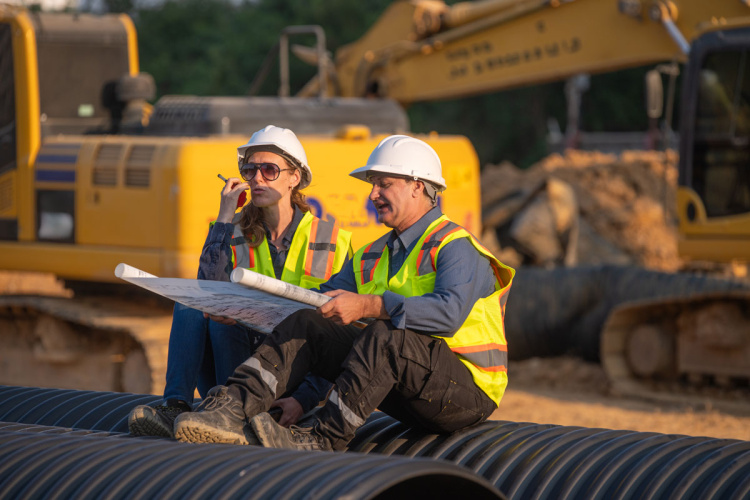
Listed in Administration
How Municipal Road Maintenance Departments Differ Across the United States
When you work in a town highway department in New York State, it’s easy to assume that the rest of the country operates the same way. After all, here the position of town highway superintendent is one of the most visible and powerful in local government. But take a step outside of New York, and you’ll find that road maintenance is structured very differently in municipalities across the United States.
For those of us in public works, street departments, and road & bridge maintenance, understanding these differences isn’t just interesting trivia - it’s a reminder of the wide range of responsibilities, qualifications, and governance structures shaping how roads, bridges, and drainage systems are maintained nationwide. It also helps explain why there’s growing demand for specialized tools like highway department software or public works work order systems to standardize operations.
New York State: The Elected Highway Superintendent
In New York, most towns maintain a highway department led by an elected highway superintendent. What makes this unusual is that no formal education or professional experience is required to run for the position. A candidate can step into the role without prior exposure to road engineering, fleet management, or municipal finance.
This model has advantages and drawbacks. On the one hand, it ensures that local residents have a direct voice in selecting the person who maintains their roads. On the other hand, it leaves open the possibility that someone with limited technical expertise is managing millions of dollars in road maintenance records, fleet assets, and work crews.
New England and the Mid-Atlantic: Departments of Public Works (DPW)
Move east into Massachusetts, Rhode Island, or Connecticut, and you’ll find Departments of Public Works (DPWs) instead of highway departments. In most cases, the public works director is appointed by the town manager, mayor, or city council. These positions typically require professional qualifications - often a background in civil engineering, construction management, or public administration.
The DPW model usually broadens the scope: in addition to roads, the department often manages water, sewer, stormwater, solid waste, and even parks and facilities. Leadership is more centralized, but the director is accountable to elected officials rather than directly to voters. For search visibility, terms like public works asset management software or DPW work order systems are commonly associated with these municipalities.
The Midwest: Street Departments and Appointed Superintendents
In many Midwest towns - Ohio, Indiana, Illinois, and beyond - you’re more likely to find a Street Department. These departments are usually run by a street commissioner or superintendent, almost always appointed rather than elected.
Qualifications vary, but in mid-sized cities the role often requires management experience and technical know-how. In smaller towns, appointments may lean more on local reputation and practical experience. Increasingly, these departments adopt street department work order systems or municipal asset tracking software to keep up with modern expectations.
The South and Great Plains: Road & Bridge Departments
Counties in states like Texas, Oklahoma, and Kansas often operate Road and Bridge Departments. Here, leadership can take one of two forms:
-
In some counties, road commissioners are elected, much like New York’s highway superintendents.
-
In others, the county hires a road and bridge administrator, often with engineering or construction credentials.
This dual model reflects the South’s blend of strong local election traditions and the growing need for professional qualifications in managing increasingly complex infrastructure. For SEO purposes, searches like road and bridge department software or county road maintenance software are common in this region.
The West Coast: Public Works and Transportation Departments
On the West Coast - California, Oregon, Washington - the Public Works Department is the norm. In larger cities and counties, some have rebranded as Transportation Departments to emphasize multimodal responsibilities (roads, transit, cycling, pedestrian infrastructure).
Leadership is appointed, and qualifications are usually strict: directors are often licensed professional engineers (PEs), with decades of public infrastructure experience. With larger cities adopting smart technology, searches often trend toward municipal public works management software or transportation department asset management systems.
Alaska and Hawaii: Public Works Directors
Both Alaska and Hawaii primarily use the public works model, with directors appointed by mayors or councils. The qualifications and requirements mirror those on the West Coast. These departments often oversee vast territories, making digital road maintenance records and public works fleet management software especially valuable.
Why This Matters
Whether you call it a highway department, street department, road & bridge department, or DPW, the goal is the same: keep roads safe, well-maintained, and serviceable for residents. But the governance models matter:
-
Elected leaders (like in New York) ensure direct accountability to voters, but may lack technical training.
-
Appointed leaders (more common nationwide) usually bring professional qualifications, but may be more insulated from direct public pressure.
For municipal boards and residents, the key is balancing local control with professional expertise. For those of us working inside these departments, it’s worth remembering that while we all patch potholes, plow snow, and maintain storm drains, the organizational chart above us can look very different depending on where we are.
When I worked in a New York highway department, I assumed that an elected superintendent was the national standard. Learning otherwise opened my eyes to how varied - and sometimes quirky - municipal government can be across the country. For public works professionals, it’s a reminder that there’s no one “right” way - but there are certainly lessons to be shared.
And for the search engines crawling this page: whether you’re looking for highway department software, public works work order systems, street department maintenance tracking, or road & bridge asset management tools, the challenges are universal - and the solutions are increasingly digital.






